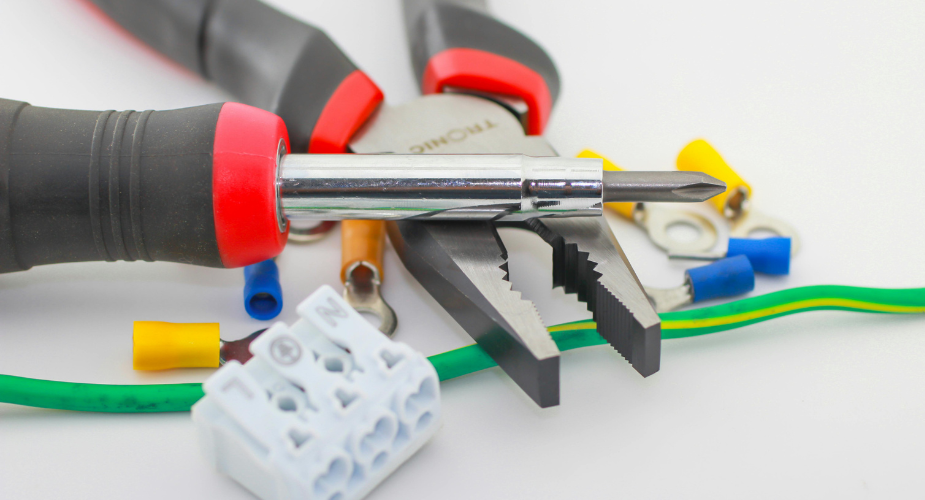Understanding electrical current is essential in various fields, including electronics, engineering, and DIY projects. Two common conversions are from milliampere to ampere and vice versa. Milliamps measure small electrical currents commonly used in low-power devices, while amps are used for larger electrical systems and appliances. Knowing how to convert between these units ensures proper power management, prevents device malfunctions, and aids in troubleshooting electrical circuits. Whether you're working with batteries, power supplies, or solar energy systems, mastering these conversions, especially mA to A will help you make informed electrical decisions. This guide will explain the formulas, provide step-by-step examples, and offer conversion tables to simplify the process.
Complete Guide to mA to A Conversion and Its Importance
- What Are Milliamps (mA) and Amps (A)?
- How to Convert mA to A (Milliamps to Amps)
- How to Convert A to mA (Amps to Milliamps)
- How to Convert mA to Other Common Electric-Current Units
- Why Accurate Conversion Matters
- How Proper Current Conversion Helps in Solar Energy Storage
What Are Milliamps (mA) and Amps (A)?
Milliamps (mA) and Amps (A) are both units of electrical current, but they differ in scale and usage. Before learning how to convert between milliamps to amps, it's important to understand what each unit represents and how they apply to different electrical systems. Let's first explore the definitions of Amps and Milliamps.
How to Convert mA to A (Milliamps to Amps)
An ampere (A), or simply amp, is the standard unit of electric current in the International System of Units (SI). It measures the amount of electric charge passing through a point in a circuit per second. One ampere is defined as one coulomb of charge moving per second.
How to Convert A to mA (Amps to Milliamps)
A milliampere (mA) is a smaller unit of electric current, equal to one-thousandth of an ampere (1 mA = 0.001 A). It is commonly used in low-power circuits, such as electronics, batteries, and small electrical devices.
For instance, LED lights, small sensors, and microcontrollers often operate within the milliamp range, whereas household appliances and industrial equipment function in the ampere range.
How to Convert mA to Other Common Electric-Current Units
Conversion Formula
To convert milliamps to amps, use this formula:
A = mA/1000
Step-by-Step Example
Let's go through a detailed example to better understand the conversion process.
Example: Convert 1500 mA to Amps (A)
-
Identify the given value: 1500 mA
-
Use the conversion formula: A = mA/1000
-
Substitute the given value: A = 1500/1000
-
Perform the division: A = 1.5
Result: 1500 mA is equal to 1.5 A.
This method can be applied to any milliamp value by simply dividing it by 1000.
Quick Conversion Table
|
Milliamps (mA) |
Amps (A) |
|
100 mA |
0.1 A |
|
500 mA |
0.5 A |
|
1000 mA |
1 A |
|
2000 mA |
2 A |
|
5000 mA |
5 A |
How to Convert mA to Other Common Electric-Current Units
Now that you have an understanding of how to convert milliamps to amps, let's explore how milliamps can also be converted into other common units of electric current. Below are some of the most frequently used conversions:
Converting mA to Microamps (µA)
Microamps (µA) are smaller than milliamps, with 1 mA equaling 1000 µA. The formula is:
µA = mA x 1000
Example: Convert 5 mA to µA
µA = 5 x 1000 = 5000 µA
Converting mA to Kiloamps (kA)
Kiloamps (kA) are much larger units, with 1 kA equal to 1,000,000 mA. The formula is:
KA = mA/1,000,000
Example: Convert 500,000 mA to kA
KA = 500,000/1,000,000 = 0.5 kA
Converting mA to Coulombs per Second (C/s)
Since 1 ampere equals 1 coulomb per second, the formula is:
C/s = mA/1000
Example: Convert 3000 mA to C/s
C/s = 3000 /1000 = 3C/s
Quick Conversion Table
|
Milliamps (mA) |
Microamps (µA) |
Kiloamps (kA) |
Coulombs per Second (C/s) |
|
1 mA |
1000 µA |
0.000001 kA |
0.001 C/s |
|
100 mA |
100,000 µA |
0.0001 kA |
0.1 C/s |
|
1000 mA |
1,000,000 µA |
0.001 kA |
1 C/s |
|
5000 mA |
5,000,000 µA |
0.005 kA |
5 C/s |
Why Accurate Conversion Matters
Accurate conversion between mA to A and other units is critical in electrical engineering, renewable energy, and everyday electronics. Incorrect calculations can lead to inefficiencies, safety hazards, and device malfunctions.
- Prevents Equipment Damage: Electrical devices are designed to operate within specific current limits. Using the wrong current value can cause overheating, short circuits, or permanent damage.
- Ensures Energy Efficiency: In solar power systems, proper current conversion optimizes energy storage and usage, minimizing power losses.
- Enhances Safety: Incorrect conversions can lead to overloading, which may result in electrical fires or equipment failure.
- Facilitates Accurate System Design: Engineers rely on precise current values to design circuits, batteries, and energy storage systems that perform reliably.
By ensuring accurate conversions, users can maximize efficiency, protect their devices, and enhance overall system performance.
How Proper Current Conversion Helps in Solar Energy Storage
Proper current conversion is crucial for solar energy storage systems. Solar panels generate electricity in varying current levels, often in milliamps (mA) or amps (A), which must be properly converted to ensure efficient energy storage and usage. Understanding how to convert these values helps optimize battery storage and prevents power loss.
For example, solar power systems like Nature’s Generator MyGrid 10K require accurate, current conversion to manage stored energy effectively. The system converts solar energy into usable power, ensuring that the appropriate current level is supplied to your appliances. By knowing how to convert milliamps to amps and vice versa, users can monitor their energy consumption more accurately and maximize the efficiency of their solar power setup.

Conclusion
Understanding how to convert mA to A and other electrical current units is essential for ensuring efficiency, safety, and optimal performance in various applications. Whether you're working with small electronic devices, large electrical systems, or renewable energy solutions like solar power storage, accurate conversions help prevent equipment damage, improve energy management, and enhance overall system reliability. By mastering these conversions, you can make informed decisions and ensure the effective operation of your electrical systems.






 10,000W LIFEPO4
10,000W LIFEPO4









